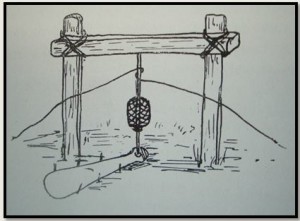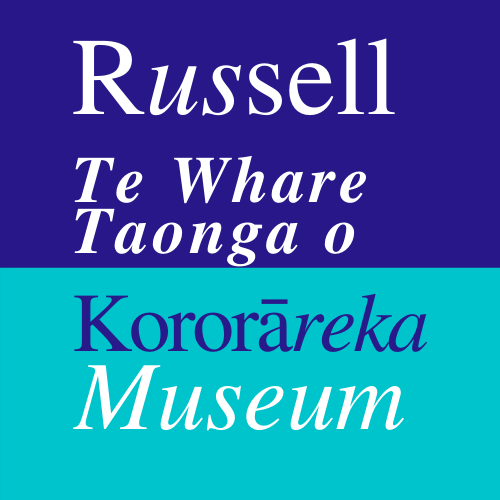
 The swells and waves generated by Cyclone Lusi moved the shingle on our Russell beach around and reshaped the sand banks at Long Beach. They also tossed up some surprises. This curiously shaped rock is one of them, found at the south end of Paihia beach and handed in to Russell Museum soon after the storm. The finders are curious. So are we. The rock is pierced by three remarkably uniform holes. The largest one you can see in the image. There are two more, on the other side, both blind holes of about 5mm diameter, one a centimetre deep, the other extending almost 3 cm into the rock. Maybe these are rock borer burrows. The large hole is different. Our first guess is that the rock is an early net weight – the holes being made by a drill something like those drawn in the other images. Evidence suggests that Māori would have added sand and water to enhance the process. Imagine the time required to drill such a hole. By hand. In rock. And then consider how many of these – if that is what it is – would have been needed in a net 9 metres deep and up to 900 metres long. That was Joseph Banks’ estimate of the dimensions of a net he was shown, here in the Bay of Islands, in 1769. Please, if you’d like to see this object and are able to help us solve this small mystery, come and visit. We are open every day, 10am to 4 pm.
The swells and waves generated by Cyclone Lusi moved the shingle on our Russell beach around and reshaped the sand banks at Long Beach. They also tossed up some surprises. This curiously shaped rock is one of them, found at the south end of Paihia beach and handed in to Russell Museum soon after the storm. The finders are curious. So are we. The rock is pierced by three remarkably uniform holes. The largest one you can see in the image. There are two more, on the other side, both blind holes of about 5mm diameter, one a centimetre deep, the other extending almost 3 cm into the rock. Maybe these are rock borer burrows. The large hole is different. Our first guess is that the rock is an early net weight – the holes being made by a drill something like those drawn in the other images. Evidence suggests that Māori would have added sand and water to enhance the process. Imagine the time required to drill such a hole. By hand. In rock. And then consider how many of these – if that is what it is – would have been needed in a net 9 metres deep and up to 900 metres long. That was Joseph Banks’ estimate of the dimensions of a net he was shown, here in the Bay of Islands, in 1769. Please, if you’d like to see this object and are able to help us solve this small mystery, come and visit. We are open every day, 10am to 4 pm.
Source. Elsdon Best (1912) Stone Implements of the Maori. Dominion Museum Bulletin No 4. Wellington.



























